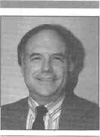Politics
Batman had Robin. The Cisco Kid had Pancho. Johnny Carson had Ed McMahon. The concept of the sidekick is a staple of the entertainment world. In Illinois politics, it's the role played by the lieutenant governor, generally well out of the limelight. The job as the state's second banana has taken on a much higher profile in recent weeks, however, in the wake of the on-again, off-again resignation of the incumbent, Republican Bob Kustra, and the breast cancer surgery undergone by Sen. Penny Severns of Decatur, the Democratic candidate for the post. The unaccustomed attention has prompted questions about the office and its duties, even suggestions that it be eliminated. While the image of a no-name, do- nothing office holder counting paperclips makes wonderful grist for editorial cartoonists, the rationale behind the structure of the lieutenant governorship remains as valid today as it was to the drafters of the Illinois Constitution some two dozen years ago. A case can be made for some minor fine-tuning, but there's certainly no need for major change, as close examination of the constitutional language makes clear. Unlike the specific duties spelled out for other elected officials, the job description for the lieutenant governor is both brief and broad: "The Lieutenant Governor shall perform the duties and exercise the powers in the Executive Branch that may be delegated to him by the Governor and that may be prescribed by law." Besides making the lieutenant governor first in the line of succession, the Constitution provides only two other distinguishing features about the office: party candidates for governor and lieutenant governor must run as a team in the general election, and a vacancy in the office—unlike the other five executive branch posts—will not be filled. Some of those arguing to do away with the office cite the latter provision to buttress their case, contending the drafters themselves thought so little of the office that they saw no need to make sure it is always filled. That analysis, however, misreads the intent of the drafters, who held as an underlying principle that no one should serve as governor who has not gone before the people statewide in a general election. Underscoring that resolve, the order of succession after the lieutenant governor runs to not just the attorney general, but to the elected attorney general. If the incumbent attorney general is appointed, not elected, next in line is the elected secretary of state. If that office holder is appointed, the line of succession moves on, until finally reaching someone whose mandate comes from the people. Given that intent, it's easy to see why the Constitution says the office "shall remain vacant." If that's so, why not eliminate the lieutenant governor and go right to the elected attorney general in the line of succession? Again, the Constitution itself suggests the answer in calling for the governor and the lieutenant governor to run as a team in the general election. Recall that the charter was fashioned just a few years after voters in 1968 elected a Republican governor, Richard B. Ogilvie, and a Democratic lieutenant governor, Paul Simon. While the pair enjoyed a better working relationship than might have been expected, delegates to the Sixth Illinois Constitutional Convention were fearful that a future ticket split might not involve two politicians of such high principle. To minimize the chance of partisan bickering, the delegates paired party nominees for the two top offices in the general election. The political stability sought by the drafters would be jeopardized, however, if the line of succession moved immediately to an independently elected constitutional officer. Every four years, a majority of the voters choose one party's candidate for governor, along with his or her running mate, over all other contenders, showing a preference for the winning team's philosophy, platform and vision for the state. Eliminating the lieutenant governor would increase the threat to that four-year mandate. Keeping the lieutenant governor as part of a winning team makes government continuity more likely. But isn't it wasteful to keep someone in a do-nothing job, just in case tragedy strikes? Sure, it would be, if the job were truly do-nothing. Here, too, the constitutional language provides some insight: the lieutenant governor is to perform those duties assigned by the chief executive. Thus, if the incumbent finds the job boring, as Dave O'Neal claimed in resigning in 1981, perhaps the fault lies not so much with the office as with the person holding it and with his or her relationship with the governor. In fact, most lieutenant governors since 1971 have used the office to work on issues they found interesting. Look at Neil Hartigan and senior citizen advocacy, or George Ryan and economic development, or Kustra and education reform. At the same time, Hartigan's tenure illustrates the need for fine tuning. As lieutenant governor, Hartigan made his mark not as a partner, but as a fierce rival, of Gov. Dan Walker, a fellow Democrat. Though paired in November, each had teamed up with a different, unsuccessful, running mate in March. Indeed, the current Democratic ticket also is something of a shotgun marriage, pairing gubernatorial hopeful Dawn dark Netsch with Severns, a stern critic of the comptroller's school financing plan before the primary. True, Severns did an about face after winning the nomination, but the legislature still would be wise to require candidates for the two offices to run as a team from the beginning. That would give voters greater assurance the state's two top executives shared common ground on major issues. Otherwise, though, critics of the office should heed the old adage, if it's not broken, don't fix it. Charles N. Wheeler III is director of the Public Affairs Reporting program at Sangamon State University in Springfield and a former correspondent in the Springfield Bureau of the Chicago Sun-Times.
6/September 1994/Illinois Issues
|
|||||||||||||||
